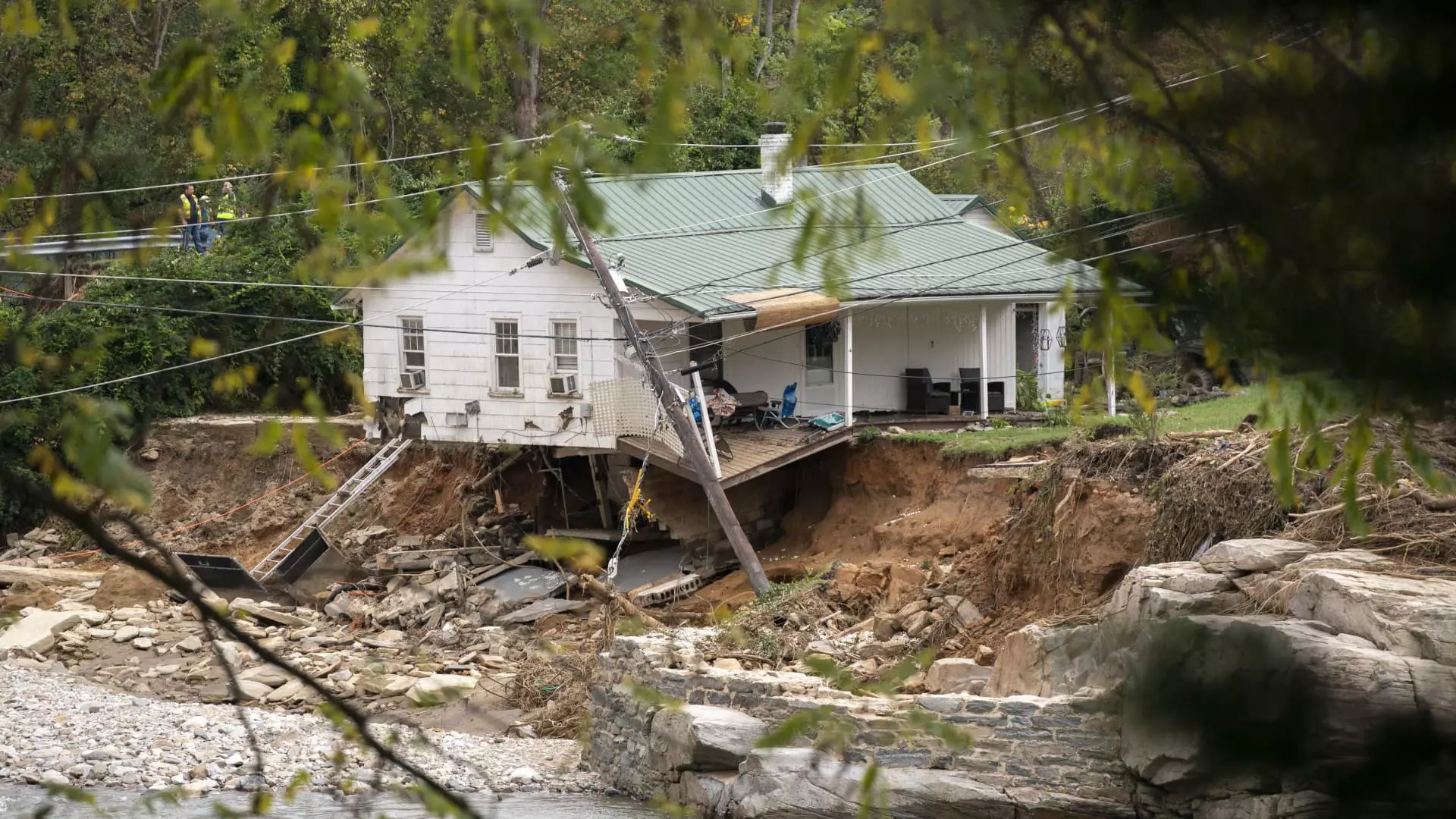The devastation caused by Hurricane Helene has yielded staggering insured losses exceeding $6 billion, but this figure only scratches the surface of the total financial impact when factoring in uninsured losses. A significant number of properties, particularly in North Carolina, lack adequate flood insurance, leaving homeowners vulnerable to catastrophic financial repercussions. This situation underscores the urgent need for innovative risk assessment technologies that can elucidate these dangers and empower potential homeowners with vital information.
The reality in North Carolina reveals a concerning trend: a mere 4% of homes reside within Federal Emergency Management Agency (FEMA) designations as flood zones. Consequently, many homeowners remain blissfully unaware of their flood risk, particularly in light of recent extreme weather events. Government-backed mortgages compel homeowners in designated flood zones to secure flood insurance, yet the vast majority beyond these zones fall prey to a dangerous illusion of safety. Climate change, however, is disrupting this paradigm, prompting firms like First Street to recalibrate property risk assessments to include climatic influences.
Revolutionizing Property Risk Scores
To confront the deficiencies in flood risk awareness, climate risk firms are pioneering advanced technology that integrates climate change impacts into property risk evaluations. Recently, First Street has launched a suite of climate risk data for all homes listed on Zillow, addressing the urgent demand for transparency in real estate transactions. This new feature not only highlights immediate risks associated with flooding, fire, wind, air quality, and extreme heat but also projects these risks 15 and 30 years into the future—the typical duration of fixed-rate mortgages. The inclusion of future risk estimations marks a significant departure from traditional real estate practices.
As homeowners face an escalating fear of climate-related disasters, a shift in purchasing behavior becomes increasingly evident. According to a recent Zillow survey, more than 80% of potential buyers now weigh climate risk as a critical factor in their home-buying decisions. Flood risk emerged as the highest concern, demonstrating a marked change in consumer priorities. This year’s data indicates that listings with significant climate risks have surged compared to five years ago across all five major climate risk categories. For example, 16.7% of new properties are rated as having major wildfire risks, while 12.8% pose substantial flooding threats.
Implications for Real Estate Values
The increasing integration of climate risk information into home listings is poised to have profound implications for real estate values. The Zillow analysis indicates that as buyers become more conscious of risks, particularly flood risks, the perceived value of homes may diminish in high-risk areas. As the costs of insurance coverage rise in tandem with an increased need for such policies, the financial calculations surrounding home purchases will inevitably shift. Buyers may begin to avoid homes in areas that present significant climate risks, leading to potential decreases in property values.
A Path Forward: Informed Decision-Making
The rapid advancements in risk assessment technologies signal a paradigm shift in real estate. Homebuyers now have access to clear, data-driven insights, enabling them to make informed decisions that go beyond the simplistic dichotomy of being “inside” or “outside” flood zones. Ed Kearns, Chief Science Officer at First Street, eloquently stated that many homeowners mistakenly assume safety based solely on FEMA designations. This approach is outdated and potentially dangerous, as heavy rainfall and other climatic phenomena can impact properties irrespective of official flood zone maps.
As the landscape of climate risk evolves, it is crucial for homeowners, real estate agents, and policymakers to fully embrace the implications of these changes. Implementing transparency in climate risk assessments not only informs potential homeowners but also catalyzes a broader dialogue about sustainable practices in urban development. Recognizing climate risk as a significant factor in property valuation and insurance requirements will pave the way for safer and more resilient communities in the face of an uncertain climate future.

Leave a Reply